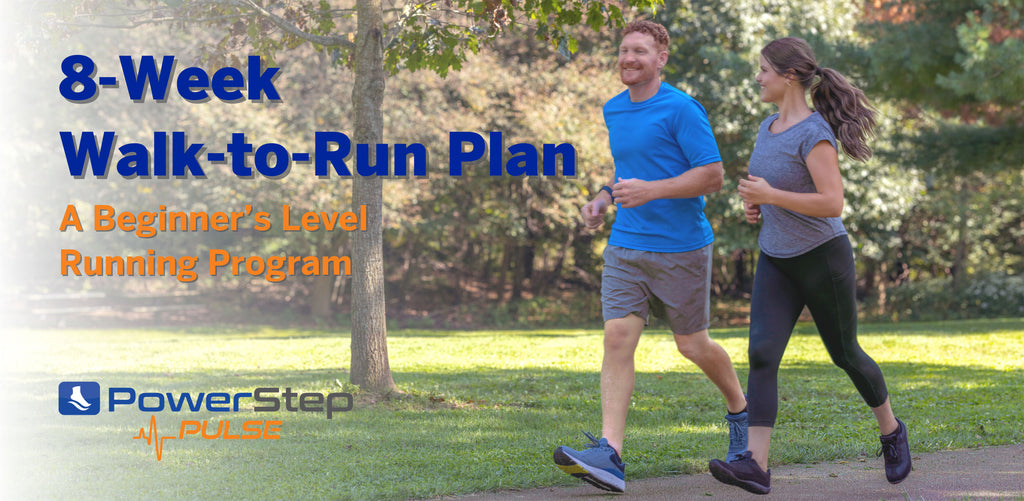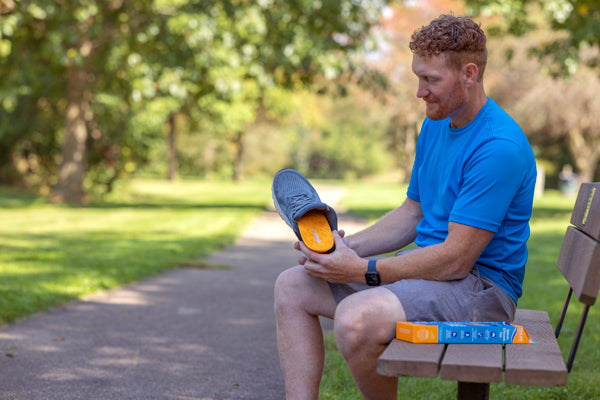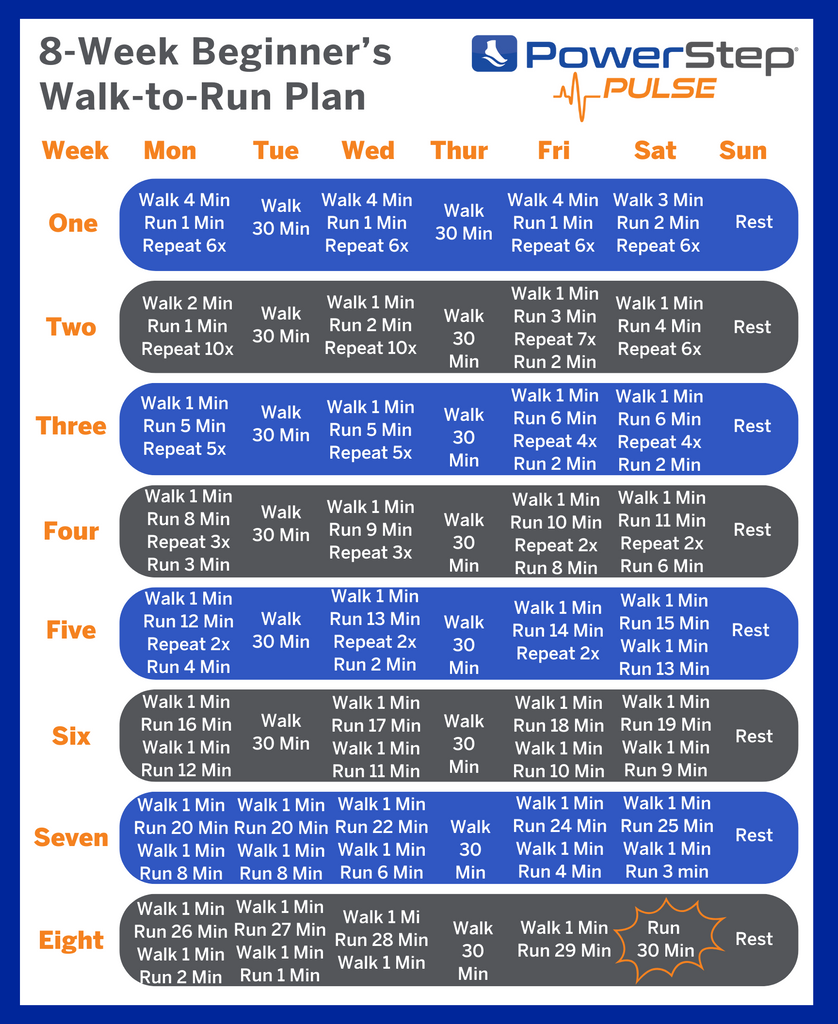8-Week Walk-to-Run Program for Beginners

Any Walker Can Run and Here's How with PowerStep®
Daily walks keep your mind and body healthy, but have you ever wanted to pick up the pace? Running has benefits, too, from improved heart health to weight loss. Any walker can become a runner with the walk to run method, one of the best free beginner running plans.
Because new runners are at greater risk for injuries and foot pain, wearing the right shoes with arch support insoles is key to a successful running plan. See how to start running for beginners with this 8-week walk to run program by PowerStep® PULSE® insoles.
What is walk-to-run?

Walk to run plans involve switching between timed intervals of walking and running, similar to the Couch to 5K training plan. These walking breaks make the running portion more manageable, allowing your muscles time to recover and reducing any discomfort.
All walking to running plans begin with longer times spent walking. Overtime, you will gradually run more and walk less. At the end of the program, you should be able to run for 30 minutes straight at a relaxed pace without walking breaks.
This method is flexible and ideal for people who want to build up from walking to jogging in a way that is comfortable for them. Going from walking to running might take longer than the initial 8 weeks depending on your current activity level and that is okay.
What to Know Before Starting a Beginner’s Running Program
Many new runners jump into a running plan without preparing for the stress that’s placed on the body when starting a new sport. Giving it your all too soon can result in common running injuries and a loss of motivation. Even experienced runners recovering from an injury return to running at a slower pace to avoid getting hurt.
Walking programs are the best way to prevent overtraining and avoid injuries like shin splints or knee pain. Because most running injuries involve the feet and lower body, you need good running shoes with arch support and cushioning to reduce pressure and absorb shock. Get the support you need by adding a running insole to your shoes.

PowerStep PULSE insoles have our podiatrist recommended arch support and shock absorbing cushioning to help improve comfort, reduce fatigue, and prevent injuries.
PowerStep PULSE Performance insoles are the best insoles for people who want to switch from walking to running. For beginner runners who want to lose weight but struggle with overpronation or flat feet, the PowerStep PULSE Maxx insoles offer greater support as heavy duty running insoles.
Tips for Starting a Walk to Run Plan
The walk to run plan helps new runners form a daily running habit they can stick to without losing their motivation or becoming injured. The following tips ensure a healthy, safe, and enjoyable transition from walking to running:
- Talk to your doctor. If you are overweight, not used to exercise, or over 40 years old, talk to your primary care doctor before starting a new workout plan. They can help make sure you are in the best shape to start running.
- Stick to a schedule. You must make time in your day for a walk-to-run plan for it to be successful. Put together a training schedule that works for you and commit to sticking to it for at least the program's duration.
- Warm up first. Before you start your walk to run workout, spend about five minutes just walking to warm up your muscles. Stretch your feet and do some dynamic body stretches like jumping jacks or jogging in place.
- Have the right gear. You should not wear walking shoes for running, but you can wear running shoes for walking. Have a good pair of running shoes with arch support from a running insole and a way to time your walk/run intervals.
- Drink water. Staying hydrated prevents muscle soreness and fatigue. Drink water before and after your workout. On hot summer days, you might want to keep a water bottle nearby to drink during a walk break.
- Let your breath guide you. Your walk interval should be a brisk walk with your arms pumping. For a relaxed running pace, you should be able to breathe easily and carry on a conversation. If you feel winded, slow down and extend your walk time.
- Take it easy. Go easy on yourself when you have a hard time pushing through a run or feel like you aren’t doing enough. Repeat a day if you need to so you can continue sticking to the schedule.
Always begin each walk-to-run workout with a walking portion. When running, stop before your muscles feel too tired even if it isn’t time to walk yet. This helps you recover so it will be easier to run again. It is important to prioritize comfort and safety over timing when you are a new runner.
Sample 8-Week Walking to Running Plan for Beginners
Whether you are using the run/walk method to lose weight or simply be more active, try this sample free 8-week walk to run plan by PowerStep PULSE insoles:

Start Running Today with PowerStep PULSE Insoles
The hardest part of a new workout is getting started and sticking to it. The walk to run method lets you ease into an everyday exercise routine without overworking yourself so you can stay motivated. Support your health and your feet with a beginner’s walk to run program and PowerStep PULSE insoles for running shoes.
References:
Burfoot, A. (2021, March 18). The 8-Week Beginner’s Program. Runner’s World.
Compton, J. and Steinhilber, B. (2023, October 24) How to start running the right way, according to physical therapists. Today.com.
Luff, C. ACE-CPT (2023, June 16) Mastering the Run/Walk Method: A Step-by-Step Guide for Effective Fitness Training. Verywell Fit.







